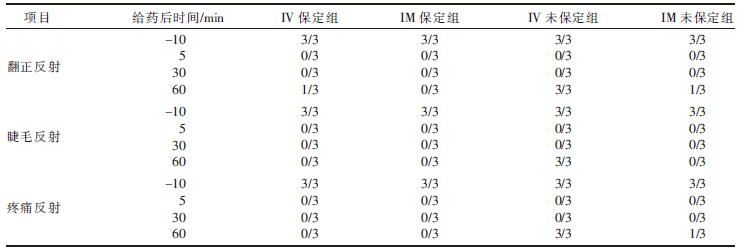Animal Husbandry and Feed Science ›› 2022, Vol. 43 ›› Issue (6): 114-118.doi: 10.12160/j.issn.1672-5190.2022.06.019
• Veterinary Pharmaceutical Science • Previous Articles Next Articles
Anesthetic Effect of Xylazine Hydrochloride in Rabbits
GU Wei-fang,WU Hui-min,ZHANG Fei-fan,Reyihan Guli·Tursun,LI Guo-qing,ZHAO Hong-qiong
- College of Veterinary Medicine,Xinjiang Agricultural University,Urumqi 830052,China










